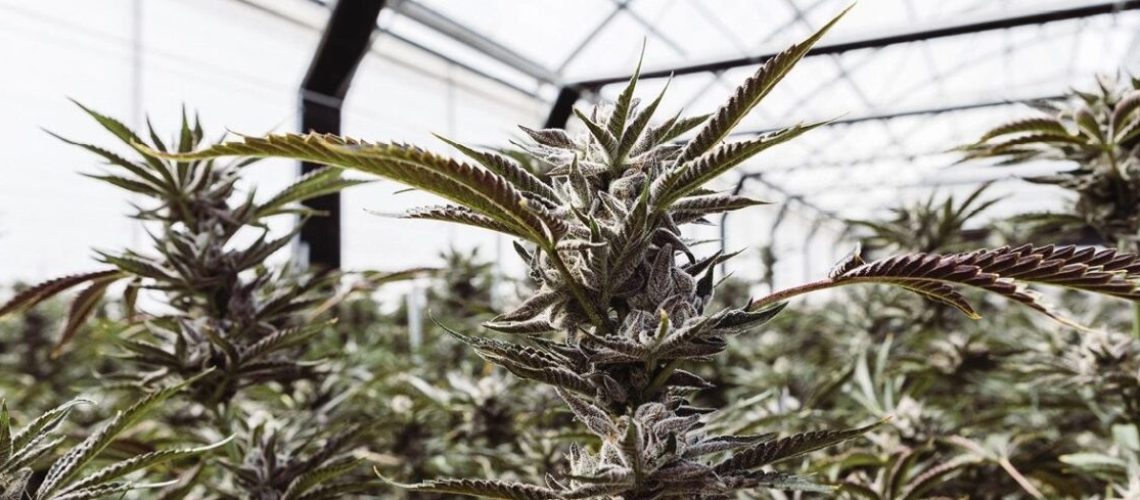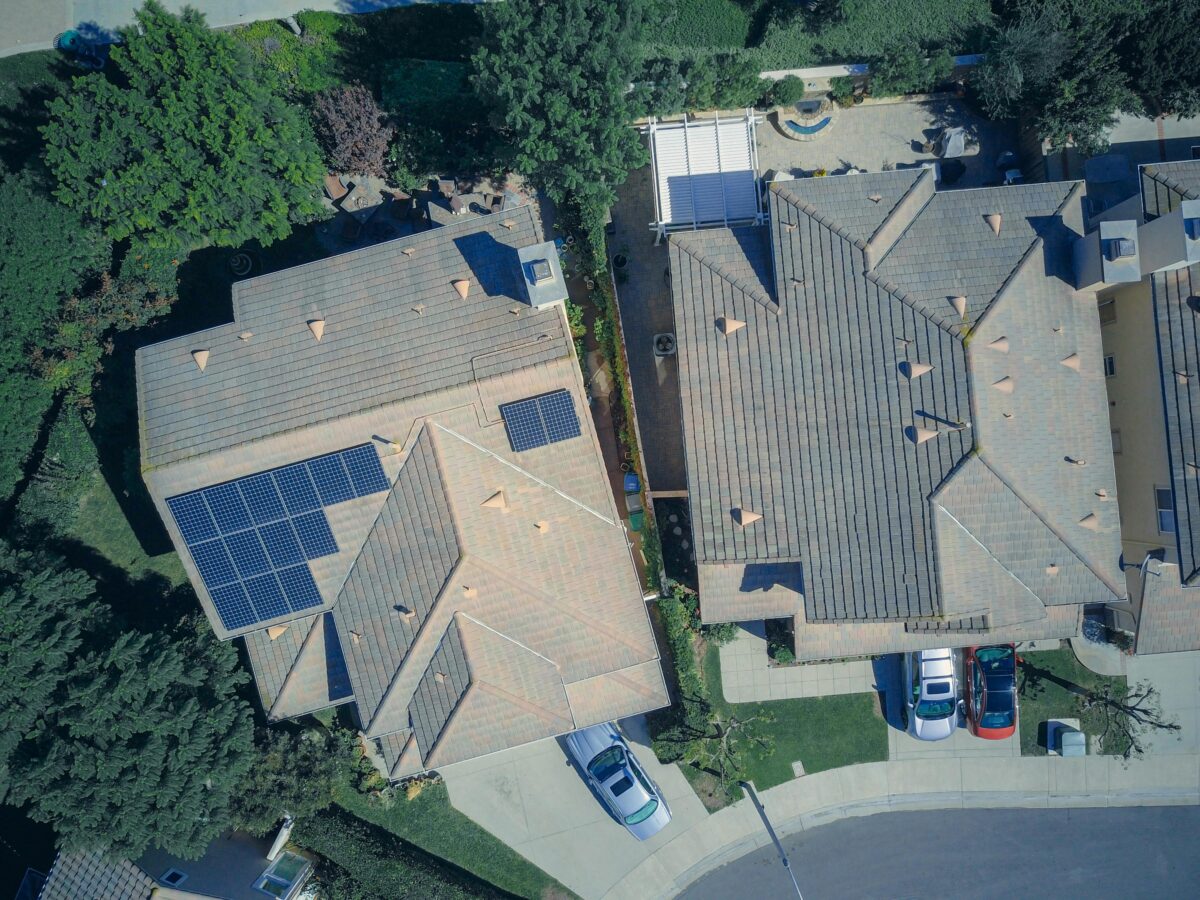From pv magazine Global
Solar energy and cannabis cultivation are old bedfellows. PV pioneer John Schaeffer has even credited solar with facilitating the northern California cannabis industry, which in turn supported the nascent PV sector. Now, as the legalization of medical and recreational cannabis gathers pace, solar continues to perform a key role.
In the weeds
Cannabis cultivation can take place outdoors, indoors, or in greenhouses. While outdoor cultivation worked for millennia, the growth of the industry and increased demand for higher-quality product, plus tight profit margins, have prompted producers to go indoors, where ideal environments can be replicated. Indoor growth gives control over environmental factors and flowering periods. More importantly, it means consistent, year-round harvests.
However, the high-powered lights and the heating, ventilation, and air conditioning equipment needed to control temperature and humidity come with a Sasquatch-sized carbon footprint. A 2022 report from the United Nations Office of Drugs and Crime (UNODC) estimated climate control measures represent more than 80% of the carbon footprint of indoor cannabis production.
UNODC estimated that the carbon footprint is 16 times to 100 times larger than for outdoor cultivation. Indoor “factory farming” is incompatible with environmental, social, and corporate governance (ESG) standards, says Evan Mills, principal at engineering consultancy Energy Associates and a former senior scientist at the Lawrence Berkeley National Laboratory.
Mills spelled out the problem in a paper published in “Energy Policy” in 2012, the year Colorado and Washington state legalized cannabis and spurred a domino effect elsewhere. Even then, he estimated indoor cultivation accounted for 1% of total US electricity use, for a carbon footprint equivalent to three million cars.
The scientist estimated 42% of cultivators grew exclusively indoors by 2020, often in multiple sprawling, Walmart-scale factories with energy consumption comparable to data centers.
Unfortunately, installing large scale solar on site isn’t an easy solution. According to Mills’ recent research into a proposed indoor cannabis industrial park in Blythe, California, the amount of solar needed to achieve net zero energy supply would cover 1,400 acres, far more land than would be necessary if the cannabis were grown outdoors.
While entirely valid, Mills’ research suggests an erroneous equivalency between indoor- and outdoor-grown cannabis. After all, anyone can brew up a big batch of moonshine in a bathtub but it’s not so easy to produce a fine single-malt Scotch at scale. Indoor cannabis is a premium product and in a state like California, where people can still easily access a black market at least double the size of the regulated (and taxable) industry, commercial cannabis companies are incentivized to produce premium products only cultivable in a climate-controlled environment.
Large-scale outdoor farming is also fraught with risk. In October, or “Croptober” as it is known, all of California’s outdoor-grown cannabis is harvested. This single harvest, if it has not been spoiled by environmental impacts such as wildfires, is only attractive for consumers for several months. If the crop fails or people decide to use cannabis in the other nine months of the year, well, they’ll turn to an indoor site or greenhouse.
Through the roof
Despite the alarming energy intensity of indoor cultivation, the sheer roofspace of grow houses is an ideal solar platform.
California-based Canndescent boasts more than 100,000 square feet of indoor cultivation space and annually produces almost 17 tons of cannabis. In 2019, Canndescent installed a 282.5 kW solar system at its facility in Desert Hot Springs.
Canndescent Senior Director of Compliance Andrew Mochulsky told pv magazine the Colorado Desert’s unrelenting sunshine and limited cloud cover make solar a no-brainer. “We’re in the heart of solar and wind country so it made sense to bring solar online,” he says. “We also think it’s just the right thing to do.”
Indoor cultivation, Mochulsky says, is “not trying to replace the sun but improve upon it to create rigid 12-hour midday sun conditions which are physically impossible outside. Because of that you have to control the environment so it’s very thirsty for electricity.”
Canndescent’s solar offsets 25% to 35% of the company’s electricity consumption, according to Mochulsky, depending on the time of year. “It’s a great investment,” he adds. “And if we can get closer to a 1:1 ratio of canopy space, it would have a substantial impact on our power costs.”
The inclusion of solar shades and carports also provides a “quality of life benefit” for employees, Mochulsky says. “So people have a nice, shaded place to sit.”
Cash-flow conundrum
Despite such benefits, only a small minority of North American indoor growers have gone solar.
“We are an outlier,” says Mochulsky. “I cannot say that it is the norm. Even here in Desert Hot Springs we are the only one, and that is in sharp contrast to the residential market where every rooftop has solar on it. Solar makes abundant sense but it entails a cost upfront.”
The Canndescent director says tight cannabis margins are a factor. “Even with an ROI [return on investment, for solar] of five years, the market is soft, [costs]are low – except to operate – and the liquidity is very tight.”
While cannabis legalization in the US is progressing state by state, and president Joe Biden has directed his secretary of health and human services, and the attorney general, to review cannabis scheduling under federal law, the market remains in legal limbo at national level, making financing solar difficult.
“There are a lot of prevailing headwinds for cannabis to adopt more solar,” says Mochulsky. “Access to a lot of financial instruments is just not available. We cannot get a standard loan from the standard banks. We can’t, for example, mortgage a company. Cannabis companies don’t have availability to things like bankruptcy. Federal illegality also means we don’t have access to state and federal tax-credit programs [such as the Inflation Reduction Act]. Investors are much more attuned to that degree of risk. After all, if a company can’t restructure, it has to fail.”
There are more examples of solar adoption, however. Much further north, Freedom Cannabis tapped AltaPro Electric to design and install a 1.83 MW system atop its facility in Acheson, Alberta, in 2020.
“It’s Canada’s largest operational rooftop PV installation,” says AltaPro Chief Financial Officer David DeBruin.
Freedom Cannabis is reaping the rewards from betting on solar. “The margins in the indoor grow operations are very competitive and chopping down one of the largest opex [operating expenditure] items is a great way that Freedom Cannabis has been able to be a leader in the industry,” DeBruin tells pv magazine.
He says other cannabis companies have made inquiries about solar but, as in the US, “it seems the clients are held back due to financing becoming harder to attain from lenders. It’s too bad because the cost of borrowing is dwarfed by the savings many times, making any loan to install solar cash flow positive in year one.”
Agrivoltaics and greenhouses
Cannabis is not limited to medical and recreational use. Hemp is one of the most versatile crops on the planet – and it’s making a big comeback. As hemp is not grown for psychoactive component tetrahydrocannabinol (THC), its farming is far less intensive and finicky than, for example, the high-THC flower grown by Canndescent in California. This makes hemp a potentially ideal agrivoltaic crop.
In Melz, Germany, agrivoltaic developer SunFarming is currently trialing the cultivation of hemp under solar panels. “All the plants, without exception, have grown well and developed excellently,” says Rafael Dulon, founder and managing director of Hanf Farm. Dulon says the panels also help with mold, a key concern for hemp farmers. Mold becomes a problem in autumn as temperatures cool and precipitation on the plants fails to dry. “The rain protection for the plants provided by the PV system works wonderfully,” Dulon says.
Another less-energy-intensive growing option is a greenhouse. However, the need for natural sunlight makes rooftop solar less attractive on such structures. Building-integrated photovoltaics (BIPV) are improving rapidly but products such as solar facades for greenhouses may be years away. In the meantime, US-based nanomaterials innovator UbiQD’s agricultural arm, UbiGro – and solar panel manufacturer Heliene – have entered a joint development agreement for light-optimizing, energy-producing modules designed for agrivoltaic greenhouses.
UbiGro’s translucent greenhouse film is integrated with photoluminescent particles that convert light into a preferable wavelength and can easily be combined with a solar module. UbiQD founder and CEO Hunter McDaniel told pv magazine that if the panels only partially shade the greenhouse, the yield lost to shading can be made up by the spectrum improvement provided by the film.
McDaniel adds that while indoor growers have thus far managed to keep the scope of their energy intensity quiet – as opposed to similarly emergent energy-intensive industries such as crypto-mining – indoor growth is likely to shrink. Scientist Mills’ research supports this idea, as the number of growers who operate primarily indoors fell from 80% to 60% between 2016 and 2020. With outdoor growth too inconsistent and indoor growth shrinking, the hybrid option of greenhouses is likely to proliferate in the future.
Emerging markets
The cannabis industry trend of solar uptake is continuing in U.S. states where the plant has been legalized more recently, such as New York. Nate VerHague, market development manager at New York-based installer Solar Liberty, told pv magazine the new cannabis market “is going to have a ton of potential for solar.”
VerHague notes cannabis operations in New York state (NYS) are only just getting up and running. “There is going to be some extreme utility costs when it comes to electricity for these large operations,” he says. “It is an ideal customer for solar, as these facilities typically have a lot of roof space to utilize.”
While the nascent nature of the NYS market means Solar Liberty is yet to install PV for a cannabis company, VerHague confirms the installer is “in the quoting process with some organizations,” with the market looking promising from this year onward.
National and regional governments the world over are shaping to follow in the footsteps of the Canada, Mexico, Thailand, Uruguay, some U.S. states and others. Germany could legalize cannabis completely within a few years, a development that would not only make it the world’s single largest legal market but also, considering its European centrality, the world’s “dankest” domino, as neighbors would be expected to follow. Cannabis is becoming big business and, given its energy needs, could be big business for solar, too.




